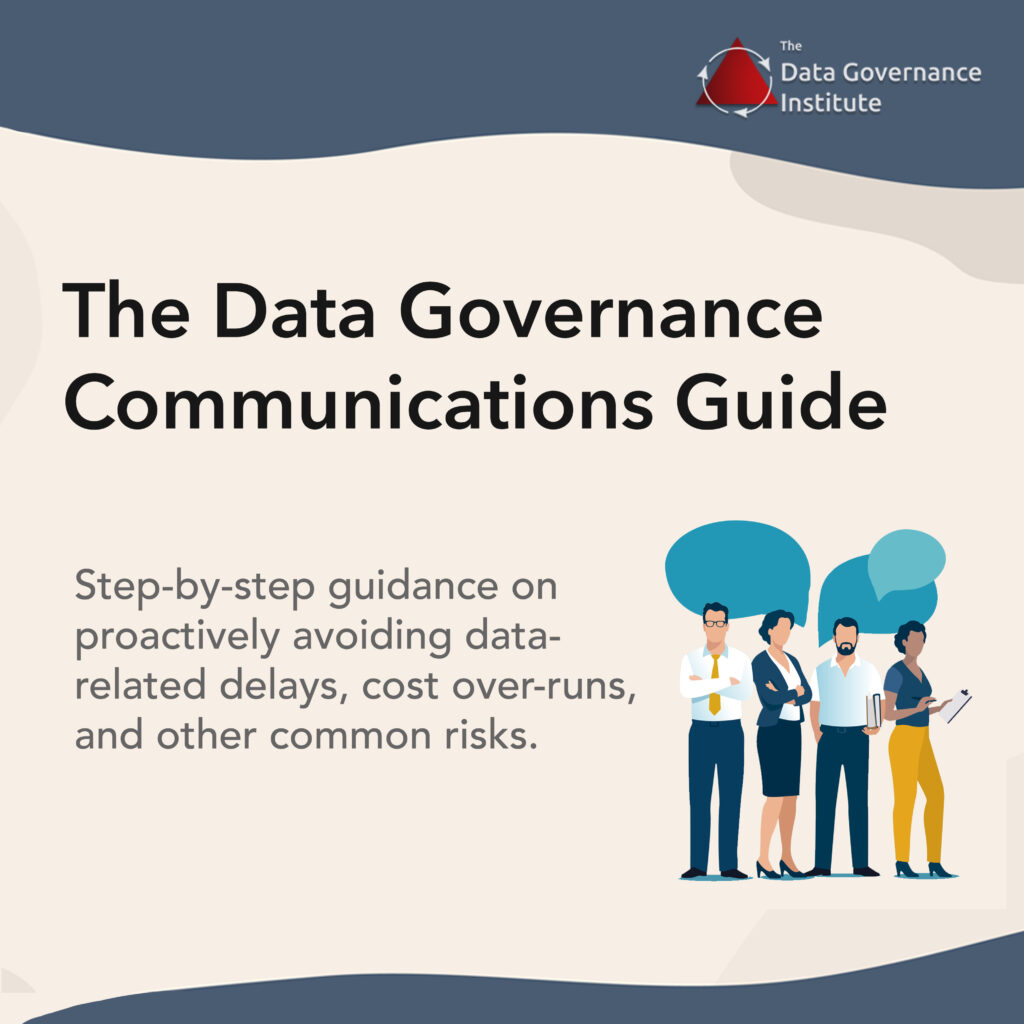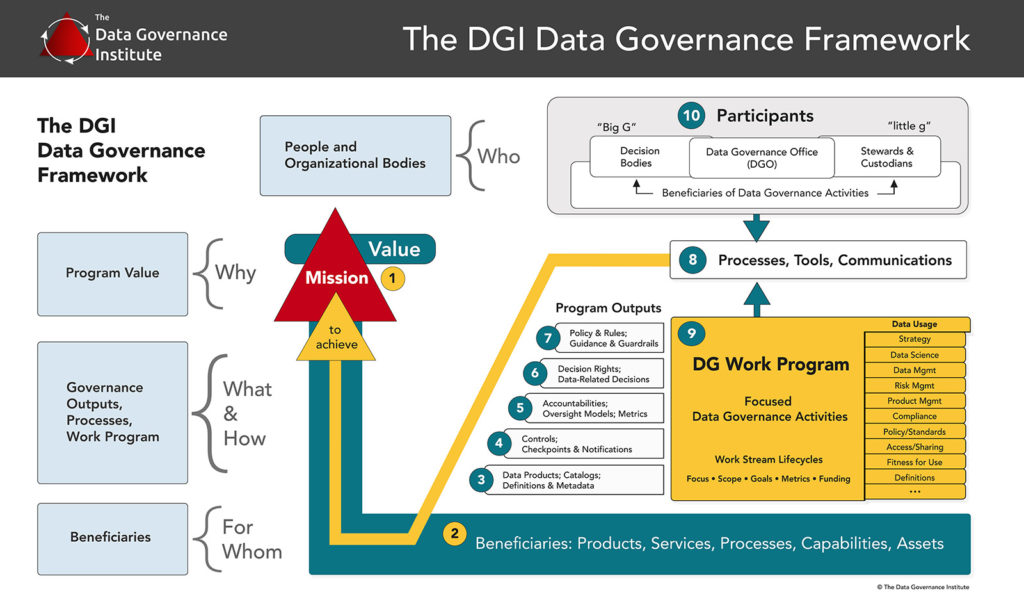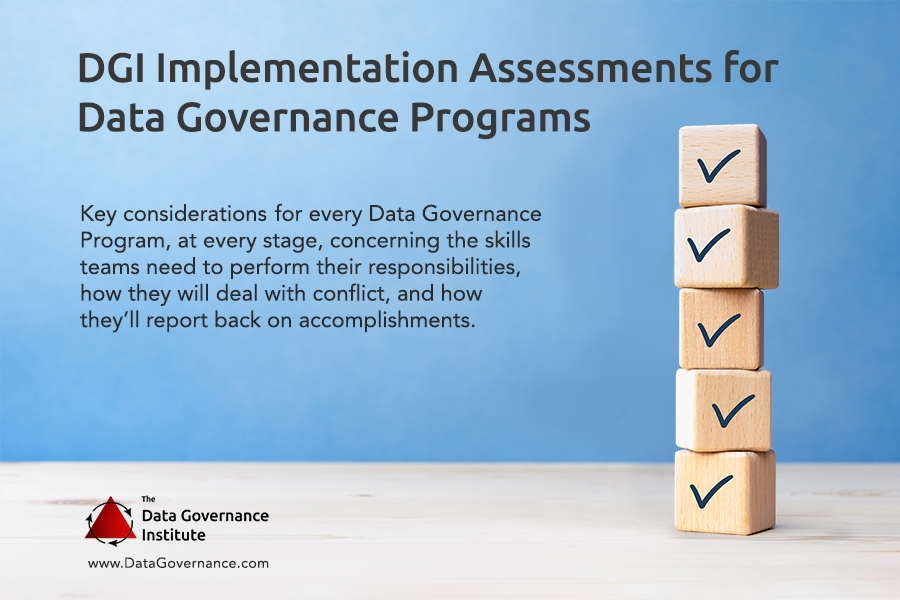Approaches to Assigning Data Ownership and Stewardship
Organizations can take multiple approaches to assigning Data Owners and Data Stewards for enterprise data. In doing so, they need to consider several factors and answer the following questions.

Question #1: Should we tie ownership/stewardship to data types?
Accountabilities may be tied to a type of data that may be
- Master Data
- Transactional Data
- Reference Data
- Metadata
- Historical Data
- Temporary Data
- or other types
Best Practice: Most organizations answer “yes” to this question. Stewards or others who are assigned data-related responsibilities are expected to work with only one or a few types of data rather than all types.
Question #2: For what data subject areas will we first assign ownership/stewardship?
Information-related or metadata-related accountabilities that focus on Master Data may be tied to different subject areas, such as:
- Customers
- Products
- Locations
- Organizational hierarchies
- etc.
Best Practice: Data Governance pilot projects often strive to govern a manageable set of data elements within a single subject area. Accountabilities are assigned to standardize data elements, specify and enforce valid values, and address data quality.
Question #3: How should we assign ownership/stewardship to data subject areas?
Some organizations assign an Enterprise Data Steward with ultimate accountability for data within a subject area or domain. Others create communities of Data Stewards and others who work with that data. Another approach is to tie accountabilities to a Master Data Management program rather than to stewardship. And still another approach is to assign data-related responsibilities to functional roles rather than to stewards.
Question #4: At what level of granularity should we assign ownership/stewardship?
Information-related accountabilities may be tied to different levels of granularity of information.
- Documents
- Content units (used in documents, web displays, reports, etc.)
- Data feeds
- Data records
- Raw data
- Domains of data (for example, all data related to Customers)
- Usage-related collections of data (for example, all fields appearing on a certain report, or all fields included in a compliance mandate such as HIPAA, HMDA, or Sarbanes-Oxley)
- Specific data entities (for example, within a data feed, an entire a Customer record, including the customer’s ID, name, and all related data)
- Data attributes (for example, only a certain preference flag within a customer record)
Best Practice: Most organizations getting started with Data Governance and Stewardship feel that assigning all levels of granularity simultaneously is a “boil the ocean” type of mistake. Instead, they choose certain levels of accountability for certain data, then expand scope over time.
Question #5: Should we tie data ownership/stewardship to processes and data flows?
Some organizations assign just one Data Owner or Data Steward for a data element or subject area. This person is responsible for the data no matter where it appears in an organization. This approach is not feasible for most organizations, however, with complicated data flows.
An alternative is assigning accountabilities for only a few segments in a data flow. One or more Data Stewards or SMEs could be responsible for access control, quality, or typical Master Data responsibilities for specific data within those segments.
Question #6: Should we tie data ownership/stewardship to compliance and/or usage?
Some organizations assign accountabilities for related sets of data. For example, HIPAA requires protections of personally identifiable information; some organizations put teams in place to locate that data across systems, to specify controls for the information, and to monitor compliance. Likewise, some lending institutions may assign accountabilities to review all data subject to Home Mortgage Disclosure Act (HMDA) compliance.



